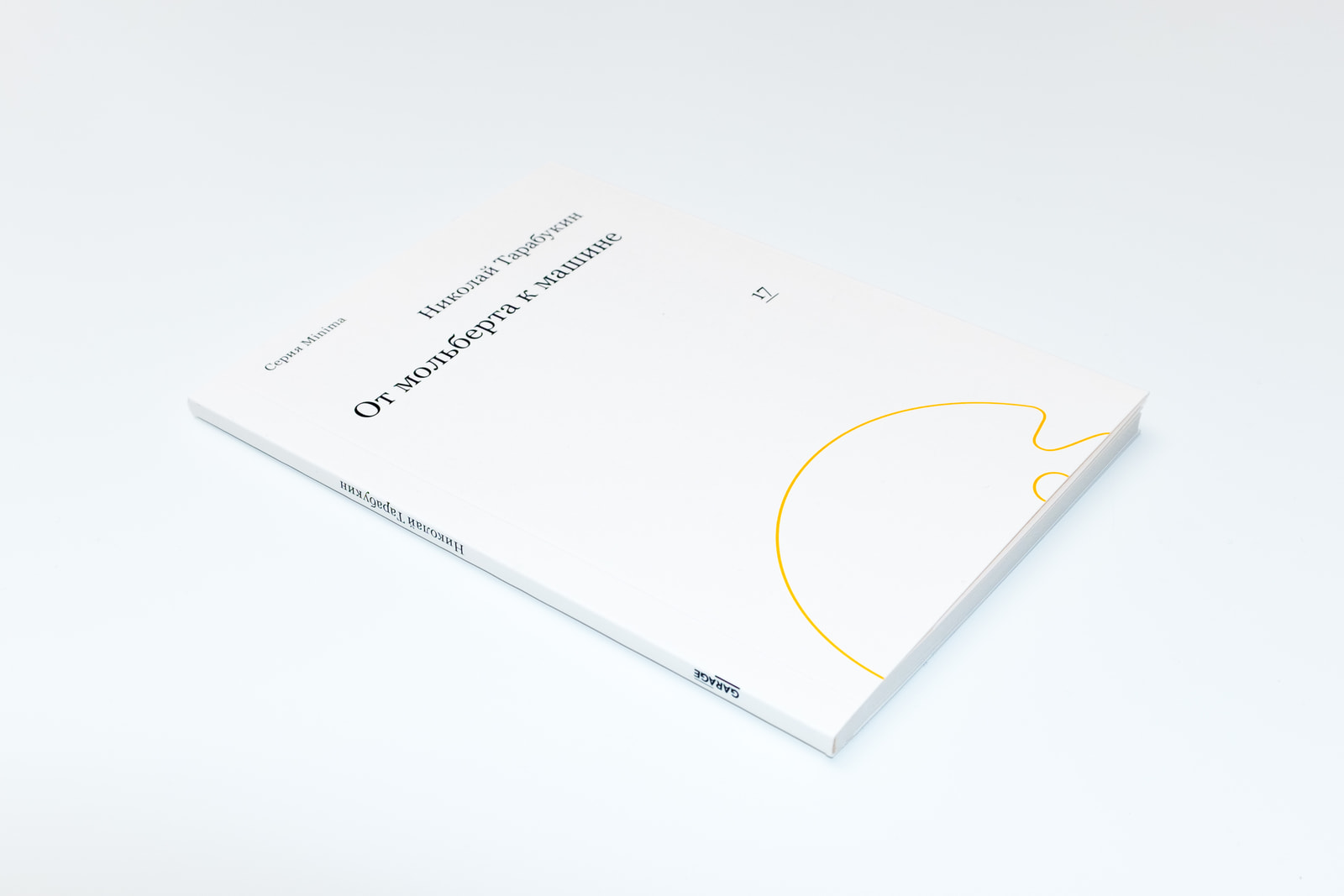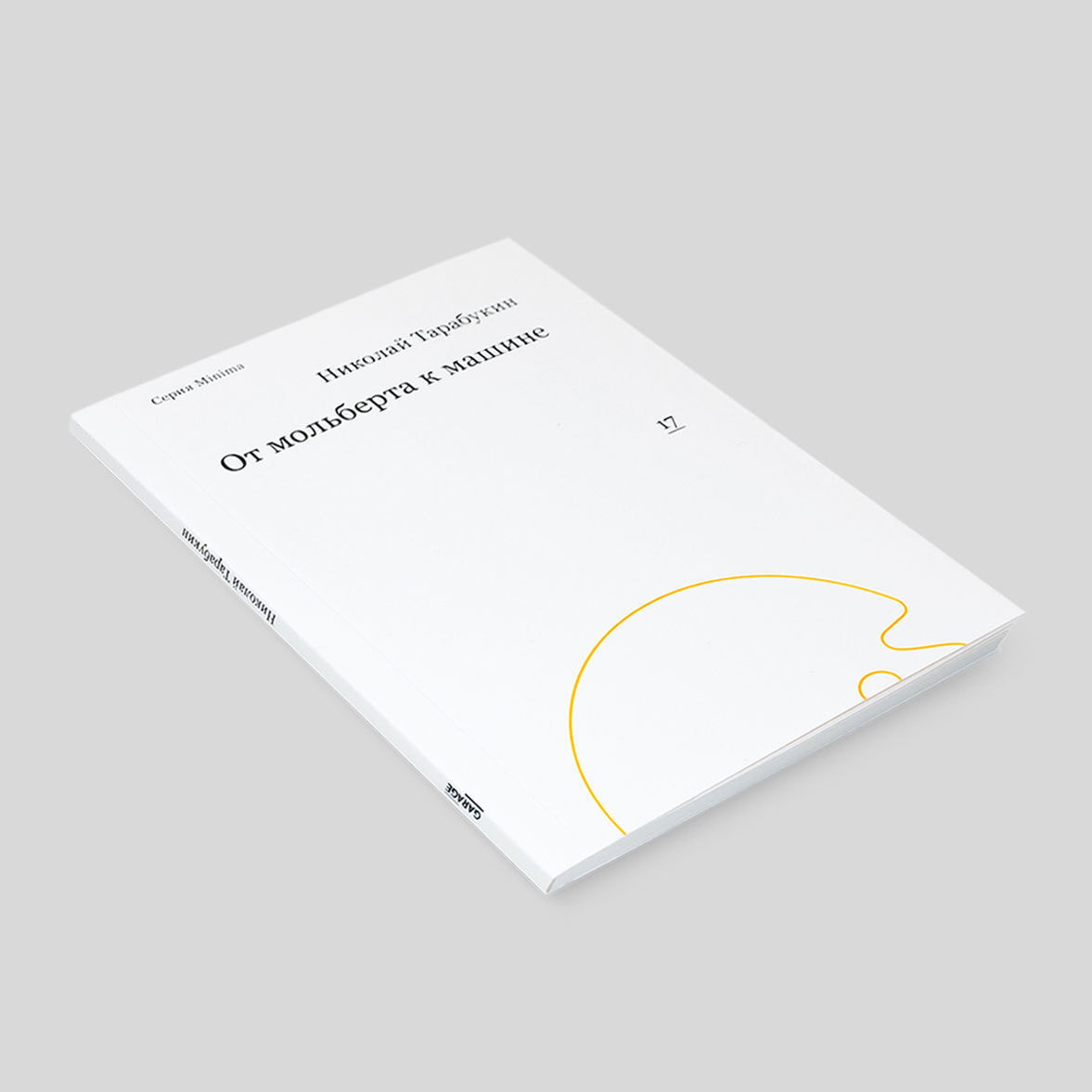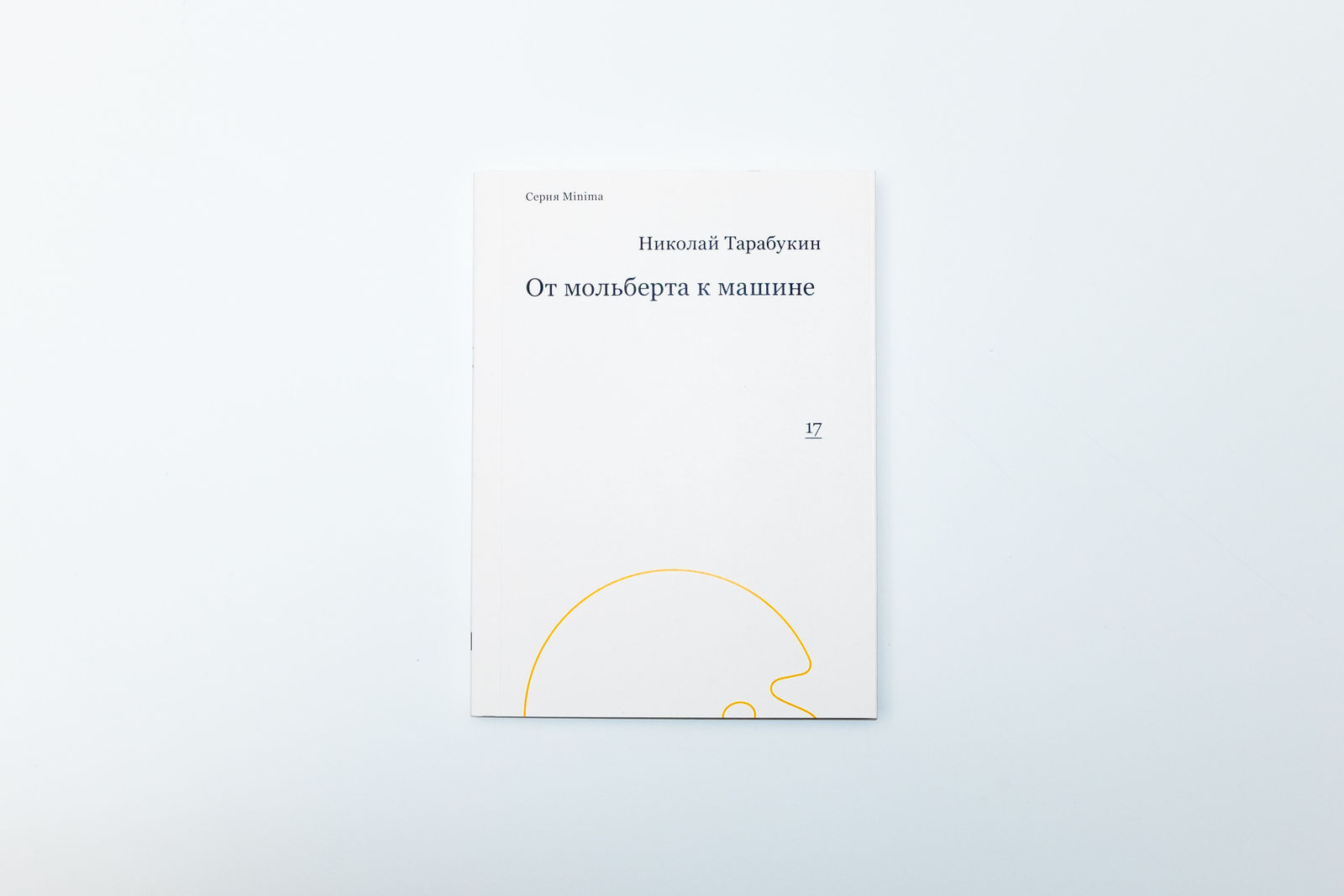One of the most famous texts on art written in Russian in the 1920s.
Nikolai Tarabukin’s essay traces the evolution of art from its easel forms (“pictures”) to its merging with mechanized production, and from individualistic interpretation of life to its collective construction. Starting from a critique of easel painting and decorative arts—or purely aesthetic forms—he develops a concept of art as a form of production.
In the preface to the new edition, art critic and philosopher Boris Groys praises Tarabukin’s essay as “the best text on art written in Russian in the 1920s, and one of the best pieces on art in the 20th century.” This text, according to Groys, also remains relevant today, as a reflection on “the situation that has determined the evolution of art in the 20th century and even to a greater extent determines it today: the disappearance of an educated, attentive and well-informed spectator, who has the time and the ability to appreciate a good artwork and can tell it from a bad one.” As Tarabukin himself puts it, “easel painting, novels, and poetry have lost their role of organizing the reader, the spectator, or the listener. This role is now assumed by production, which art merges with, taking the form of production skills. The figure of an aesthete, living in the world of books, lovingly described by Villiers de l’Isle-Adam, Barbey d’Aurevilly and Baudelaire and symptomatic of the last century, are now an oddity and an anachronism.”
Today’s mass society is the society of kitsch, as people have neither time nor energy to concentrate on whatever they see or read. But without demand, there is no supply, and so art loses in quality, and art production becomes meaningless and purposeless. Tarabukin’s advice to artists is to abandon this meaningless activity and turn to production. This, he argues, will not entail leaving their habitual domain, as industrial production is just as remote from objects as both traditional and avant-garde art. With industrial production, any skill, and in fact, any work, becomes abstract, as they are not recognized by the consumer in the final standardized product.
But if abstraction of labor concerns all workers, including artists, then art should move from the production of individual pieces to propaganda. As Boris Groys concludes, “Tarabukin’s prophecy was largely correct. At least, the ‘progressive’ art of today has moved from the making of products for aesthetic consumption to documentation of ‘abstract’ processes, which are unrecognizable in the final product. Art again becomes realistic, or even mimetic, though instead of spatial objects it now documents processes normally hidden from the eye of the consumer.”




